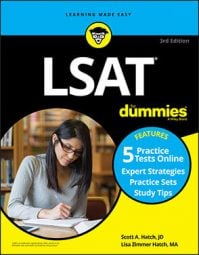A section of logical reasoning on the LSAT contains about 25 or 26 questions that you must answer in 35 minutes. Every question consists of a short statement called an argument — usually three to five sentences — followed by a question about that argument. You encounter short passages from a variety of sources, such as speeches, advertisements, newspapers, and scholarly articles.
For example, you may see an argument like this: “The local sales tax must be raised to fund city services. Admittedly, this increased sales tax will impose a greater hardship on the poorest citizens. But if the sales tax is not increased, all city services for the poor will have to be cut.”
The paragraph reflects the type of arguments that you encounter in the news every day. The questions may ask you to strengthen or weaken an argument, identify the argument’s conclusion, or duplicate the argument’s pattern of reasoning.
The question contains all the information you need to answer the question. Don’t rely on any outside information! Even if you happen to be an expert in the area a question covers, don’t rely on your expertise to answer the question.
Each question has five possible answer choices, which are often long — sometimes even longer than the argument or question. For this reason, you spend most of your time for each question examining the answer choices.
As with most LSAT questions, often you can quickly eliminate one or two of the answers because they’re obviously wrong. The remaining answers are more difficult to eliminate, so spend your time analyzing these better answer choices.

